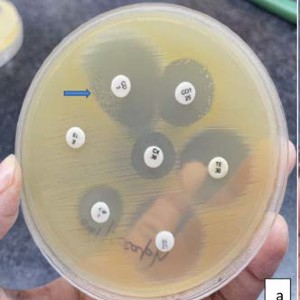Prevalence of MLSB Phenotypes of Staphylococcus aureus isolates in a tertiary care hospital of Delhi

Submitted: 31 January 2023
Accepted: 7 June 2023
Published: 15 June 2023
Accepted: 7 June 2023
Abstract Views: 1053
PDF: 329
HTML: 18
HTML: 18
Publisher's note
All claims expressed in this article are solely those of the authors and do not necessarily represent those of their affiliated organizations, or those of the publisher, the editors and the reviewers. Any product that may be evaluated in this article or claim that may be made by its manufacturer is not guaranteed or endorsed by the publisher.
All claims expressed in this article are solely those of the authors and do not necessarily represent those of their affiliated organizations, or those of the publisher, the editors and the reviewers. Any product that may be evaluated in this article or claim that may be made by its manufacturer is not guaranteed or endorsed by the publisher.

 https://doi.org/10.4081/hls.2023.11229
https://doi.org/10.4081/hls.2023.11229




